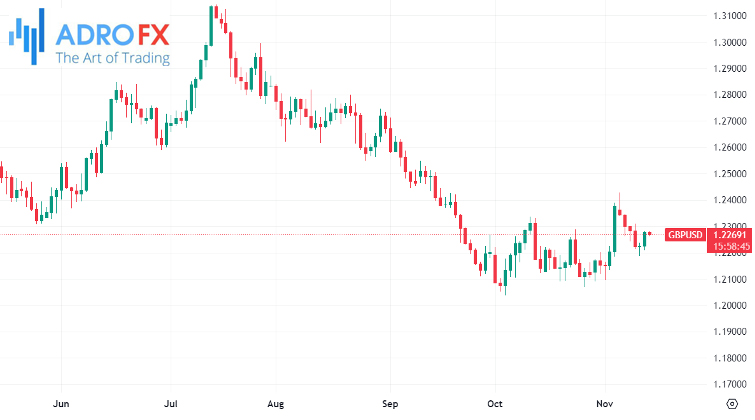Markets Nervous Amid Economic Data Releases, Political Uncertainty, and Global Meetings | Daily Market Analysis

Key events:
- UK - Employment Change 3M/3M (MoM) (Sep)
- UK - Unemployment Rate (Sep)
- Eurozone - GDP (YoY) (Q3)
- Eurozone - GDP (QoQ)
- Eurozone - ZEW Economic Sentiment (Nov)
- USA - Core CPI (MoM) (Oct)
- USA - CPI (MoM) (Oct)
- USA - CPI (YoY) (Oct)
US futures indicated a negative start to the week on Monday as investors braced for a series of significant economic data releases that could influence the future trajectory of Federal Reserve interest rate policies.
Late on Friday, Moody's (NYSE: MCO) downgraded its outlook on the US credit rating from "stable" to "negative," citing substantial fiscal deficits and a decrease in debt affordability. This development further contributed to investor hesitation, especially given the looming weekend deadline that could potentially trigger a US government shutdown.
In the stock market, the Dow Jones Industrial Average exhibited a gain of 54.77 points, or 0.16%, reaching 34,337.87. Meanwhile, the S&P 500 experienced a marginal loss of 3.69 points, or 0.08%, closing at 4,411.55, and the Nasdaq Composite declined by 30.37 points, or 0.22%, to 13,767.74.
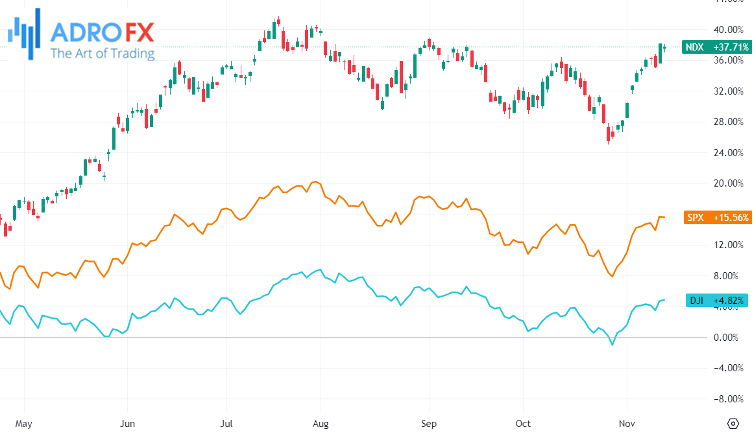
While major US stock indices have shown resilience earlier in the month, propelled by a stronger-than-anticipated earnings season and optimism regarding US interest rates nearing their peak, concerns loom over the broader economic landscape.
Within the S&P 500's sectors, energy emerged as the top performer, gaining 0.7%, whereas utilities experienced the most significant decline, dropping by 1.2%. Boeing (NYSE: BA) played a pivotal role in supporting the Dow, surging by 4% following reports from Bloomberg News indicating China's potential resumption of purchases of 737 Max aircraft. Furthermore, Dubai's Emirates made a notable order for 90 additional Boeing 777X jets at the Dubai Airshow's opening on Monday.
While Tesla (NASDAQ: TSLA) shares contributed positively, rising over 4%, the consumer discretionary index, heavily weighted by declines in stocks such as Apple (NASDAQ: AAPL) and Microsoft (NASDAQ: MSFT), weighed down the S&P 500 technology index. The evolving market dynamics underscore the delicate balance between positive and concerning factors influencing the current state of the financial markets.

The upcoming highlight on this week's economic calendar is the October reading of the US Consumer Price Index (CPI), a key indicator of inflation. Investors are closely watching to adjust their expectations for Federal Reserve interest rate policy. Expected to be released on Tuesday, the monthly CPI is anticipated to show a 0.1% increase, following September's 0.4% rise driven by unexpected spikes in rental costs. Year-on-year, consumer prices are forecasted to rise by 3.3%, a slowdown from the prior month's 3.7%.
In addition, several major retailers are set to release their quarterly results this week, including Home Depot on Tuesday, Target on Wednesday, and Walmart and Macy’s on Thursday. Investors are eager to glean insights into the outlook for consumer spending, especially in the context of recent data indicating a fourth consecutive monthly decline in US consumer sentiment.
Turning to international affairs, US President Joe Biden is scheduled to meet with Chinese President Xi Jinping in San Francisco on Wednesday. The meeting comes at a time of strained relations between the two superpowers. National Security Adviser Jake Sullivan mentioned that Biden's focus will be on re-establishing ties between the US and Chinese militaries to prevent mistakes, miscalculations, or miscommunication. The discussions are expected to cover global topics such as Taiwan, the Israel-Hamas conflict, artificial intelligence development, and trade.
Gold prices experienced a decline below crucial levels during Asian trading on Tuesday, driven by a shift towards the dollar ahead of anticipated US inflation data later in the day. The outcome of this data is widely anticipated to influence the direction of interest rates.
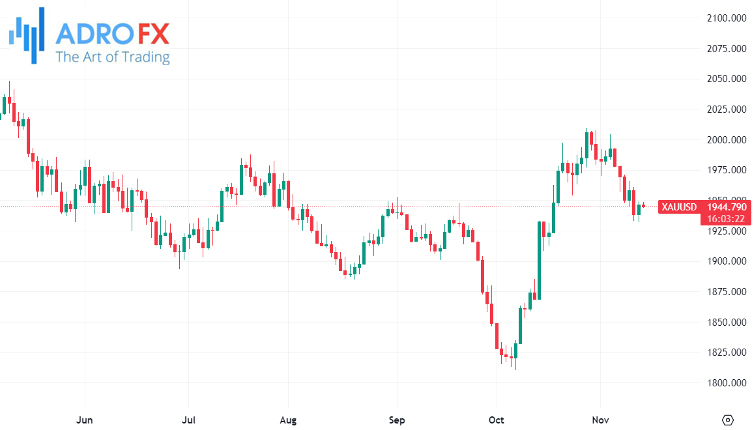
The yellow metal witnessed significant profit-taking over the past two weeks, resulting in prices dropping to a level not seen in over three weeks. The outlook for gold was dampened by the expectation of prolonged higher US interest rates.
The US Dollar Index experienced a second consecutive day of decline, extending its retreat from the 106.00 area to 105.60. This downward movement in the Greenback was driven by lower US Treasury yields and increased commodity prices. The 10-year yield dropped to 4.62%, while the 2-year yield fell to 5.02%.
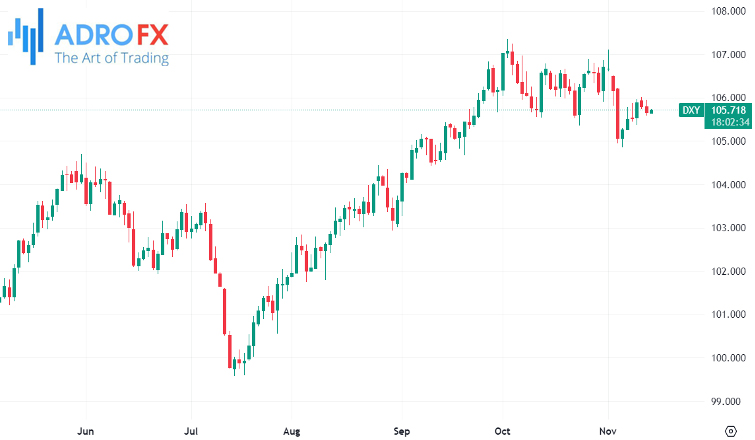
In the Asian session on Tuesday, the Australian Dollar faced challenges in extending gains as the US Dollar sought to recover from recent losses, buoyed by a rebound in US Treasury yields. The release of Australia’s Westpac Consumer Confidence data revealed a substantial decline in consumer sentiment for November, posing a potential threat to the Australian Dollar. Furthermore, the AUD remained under pressure following a dovish tone from the Reserve Bank of Australia in its latest meeting.
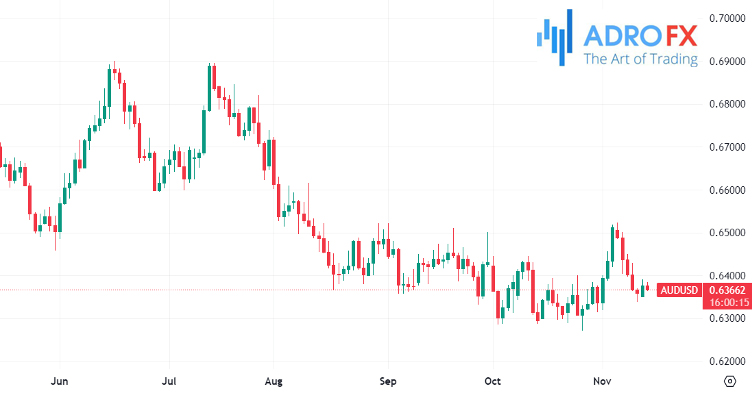
The EUR/USD maintained levels above 1.0650 and reached the 1.0700 area, displaying lateral movement in the short term. Eurostat is scheduled to release employment and growth data for the third quarter, along with the ZEW survey for November.

Meanwhile, the GBP/USD exhibited a bullish bias throughout the day, rising to 1.2280 after consistently staying above the 20-day Simple Moving Average (SMA). On Tuesday, the UK is expected to report employment data, including Average Earnings.
